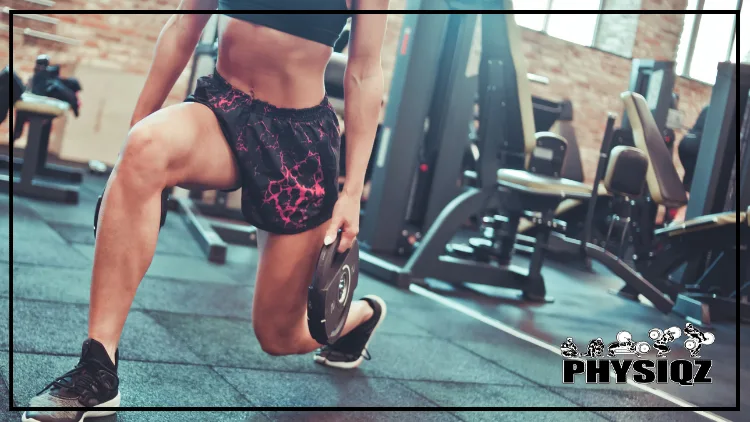
For reverse lunges muscles worked are numerous and very similar to the forward lunge but emphasize certain muscles better.1 For this reason, we’ll cover each muscle worked in the reverse lunge and pinpoint how the muscles worked in the forward lunge differ.
Of course each lunge variation differs and has it’s own benefits, but the deficit lunge and elevated foot secret explained below allows for greater results and muscle building benefits thanks to a greater range of motion.
On top of this, we’ll also cover:
- Lunge before and after results with pictures
- Benefits of the reverse lunge
- How to lunge with proper form
- How step length and posture affect the muscles targeted
- How to get more glute and/or quad engagement out of the lunge
- And a lunge focused workout program to take the guess work out of it
So before adding a reverse lunge into your gym routine, see how to get the most out of the movement and when to use reverse lunges vs forward lunges.
What Are the Reverse Lunges Muscles Worked? Which Muscles Do Reverse Lunges Work?
The reverse lunge targets all of the muscles in the lower body. Additionally, there are slight adjustments that can be made to the lunge, such as lunging forward or elevating the front or back leg which will place a greater emphasis on different parts of the leg.
Gluteus Minimus & Gluteus Maximus
The glute muscles, more informally referred to as the butt muscles are the largest muscles in the body and are composed of 4 muscles, the gluteus minimus, and gluteus maximus, the gluteus medius, and tensor fasciae latae.
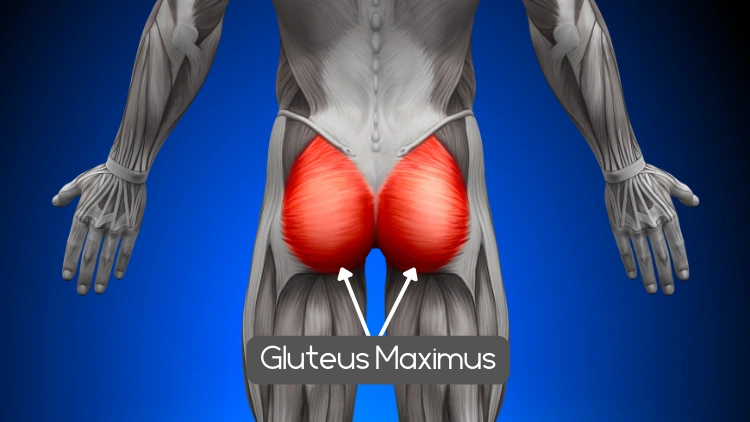
Source: decade3d via Canva.com2
The glute muscles are crucial in providing the body stability and balance. They are also important in a variety of different movements such as running and jumping.
The glute muscles are targeted while doing lunges while going down into the lunge and coming back up. Reverse lunges will also target the glute muscles more than a forward lunge will.
Furthermore, having strong glute muscles is important as they can help prevent and limit knee and back pain. Alongside adding glute strengthening exercises into a workout program, there are a variety of different knee strengthening exercises post-injury that can be extremely helpful.
Hamstring
The hamstrings are composed of 3 different muscles, the biceps femoris, semitendinosus, and semimembranosus, and are found behind the leg between the knee and butt. The hamstrings are responsible for bending the leg at the knee and help with a variety of different movements such as running, jumping, and walking.
Doing exercises to build hamstring strength is very beneficial as strong hamstrings can help limit and prevent lower back and knee pain.
While doing a reverse lunge, the hamstrings are activated while lunging down into the lunge position and pushing back up to the starting position. Reverse lunges put a greater emphasis on the hamstrings compared to the forward lunge.
The answer to the question of do lunges work hamstrings is a clear yes!
The hamstrings actually make the list of the hardest muscles to grow so the reverse lunge could be a great exercise to add to help target these muscles and work toward hamstring growth.
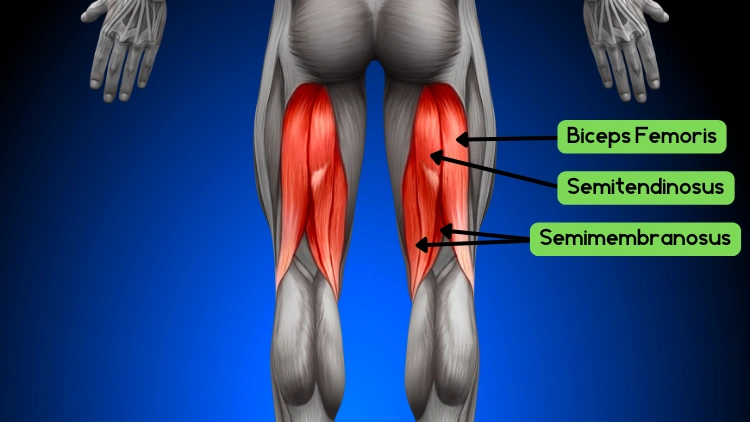
Source: decade3d via Canva.com3
Core
The core muscles are composed of three different sections, the rectus abdominis, more commonly known as the “6-pack”, the internal and external obliques, or the side muscles. The core muscles are responsible for balance, preventing back pain, and posture.
The core is activated throughout the entire lunge movement as holding a strong, tight core will significantly help balance. The reverse lunge is a unilateral movement, meaning one leg is activated at a time and due to the off-balanced positioning a lunge requires, balance is extremely important, and keeping a strong core for the entirety of the exercise will help.
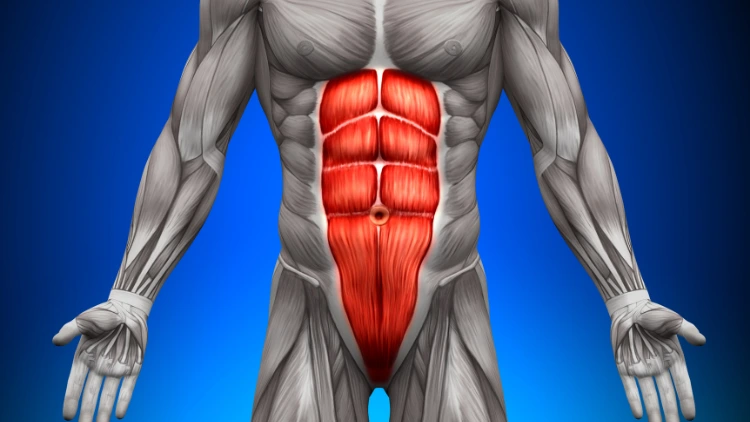
Source: decade3d via Canva.com4
Quadriceps
The quadriceps, commonly recognized as the quads are composed of 4 muscles, the rectus femoris, the vastus intermedius, the vastus medialis, and the vastus lateralis. These muscles are found on the front of one’s leg above the knee.
These muscles are responsible for flexing the leg at the knee joint and are crucial in walking, standing, and jumping. Furthermore, like the hamstrings, strong quads can help prevent and limit knee injury and pain.
The quads are activated while performing a lunge with each motion but are especially targeted while coming up back into the starting position. It’s also important to note that forward lunges will target the quads more than a reverse lunge will.
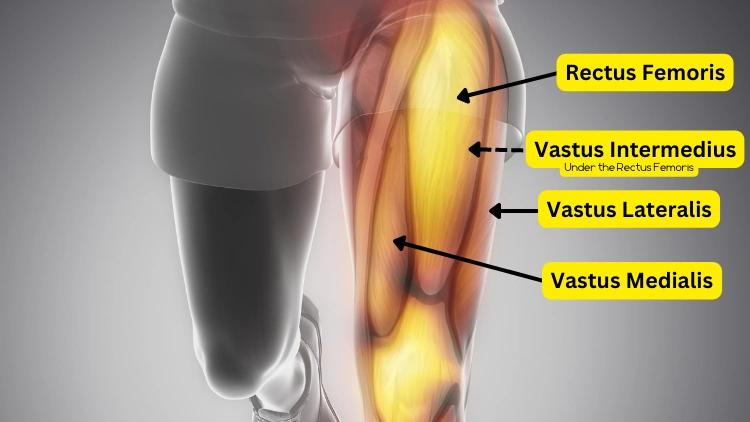
Source: janulla via Canva.com5
Calves
The calves are composed of 2 large muscles, the gastrocnemius, and the soleus. Interestingly, because these two muscles come together near the bottom of the calf, the calf is sometimes referred to as 1 muscle with 2 different sections.
They’re found at the back of the leg below the knee and above the foot.
The calves are responsible for a variety of different movements such as flexing the foot, standing on the toes, running, jumping, and walking. Having strong calves is important as they can help someone jump higher and run faster.
These muscles are activated while doing a reverse lunge while pushing off of the foot to go into the lunge position.
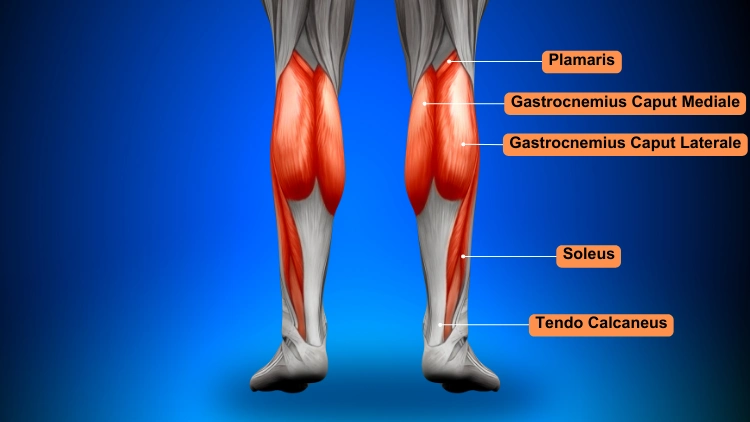
Source: decade3d via Canva.com6
Forearms
The forearm muscles are found between the hands and the elbow. There are 4 muscles under the side of the forearm including the flexor carpi radialis, palmaris longus, flexor carpi ulnaris, extensor carpi ulnaris, and 5 on the top, extensor carpi ulnaris, extensor digitorum, extensor carpi radialis brevis, extensor carpi radialis longus, and brachioradialis.
These muscles in the forearm are responsible for moving the arm up and down and twisting side to side. The forearms will get a good burn while doing a reverse lunge only if dumbbells are being used.
With the grip required to hold the dumbbells, the forearms are activated.
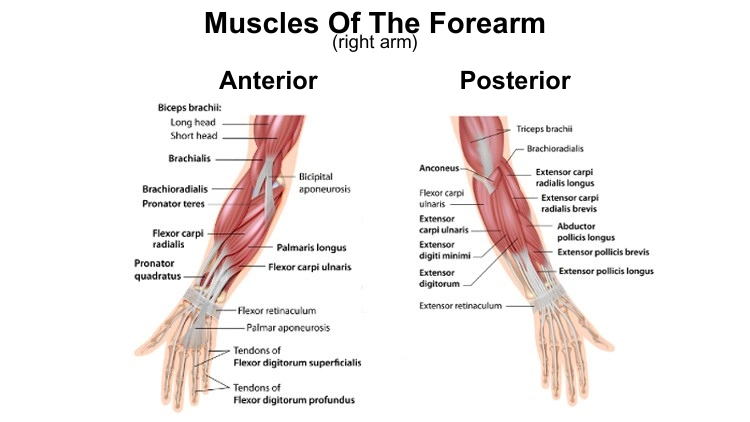
Source: Alila Medical Media on Shutterstock7
What Muscles Do Forward Lunges Work vs Reverse Lunges Muscles Worked?
Forward and reverse lunges are similar movements and do work out similar muscles but both have an emphasis on different muscles.
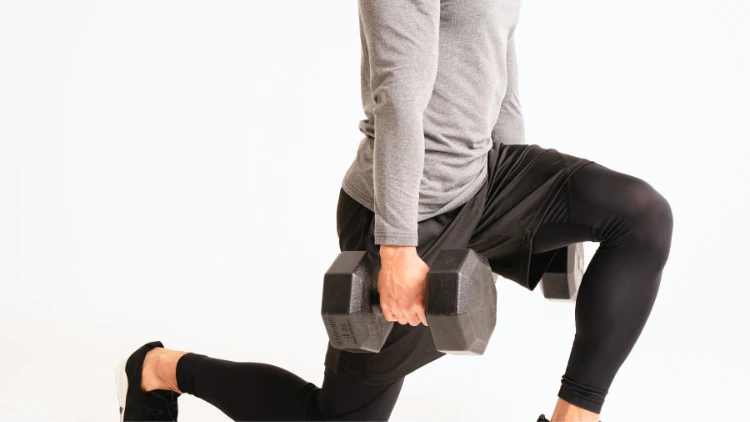
Source: baseimage via Canva.com8
Forward Lunges Emphasize: Forward lunges have a greater emphasis on the quads. These lunges may also target the core more because of the extra instability that happens when stepping forward which causes the back heel to come off the ground.
On the other hand, forward lunges may feel more natural for some because they mock the comfortable forward motion of walking.
Research has shown that the forward lunge puts a greater emphasis on the patellofemoral joint found within the knee.9 This joint often contributes to knee pain and these findings suggest that a reverse lunge may be better for someone experiencing knee pain.
Reverse Lunges Emphasize: Reverse lunges activate the hamstrings and glutes more than a forward lunge would. Reverse lunges are a great exercise to add to an upper glute workout program.
Reverse lunges generally put less pressure on the knee because the front foot stays on the ground the entire time making it easier to control the knee. Furthermore, because of the ability to remain a bit more balanced and stable while doing a reverse lunge, it may be easier to use more weight with a reverse lunge vs a forward lunge.
A reverse lunge may be a better option for beginners, those wanting to use more weight, or those who suffer from knee pain.
Are Reverse Lunges Good for Weight Loss?
At times it can be difficult to find weight loss solutions, alongside a healthy diet, adding reverse lunges into a workout program can be helpful for weight loss and building muscle. A common problem someone trying to lose weight can have is they have lost weight but body fat went up.
Adding muscle-building exercises, such as reverse lunges can help strengthen and build muscles while losing weight which will help someone lose body fat.
Weight lifting exercises will typically burn fewer calories compared to cardio so adding reverse lunges into a weight lifting program in conjunction with cardio and diet improvements would help someone see the most success with weight loss.
Benefits of Reverse Lunges Muscles Worked
Reverse lunges offer a variety of different benefits, alongside having a long list of reverse lunges muscles worked. Making it an excellent exercise to add to a workout program to help strengthen the lower body.
Here are the top 5 benefits of the reverse lunge.
- Improve Balance: The reverse lunge is a unilateral exercise, which means one leg is being worked at a time which can cause some instability and the potential to be off-balanced. Training the body to get comfortable in these positions builds confidence and strength, improving balance and stability.
- Flexibility & Mobility: The lunge requires a deep flexion of the hip joint which can improve the range of motion and strength of the hips.10
- Better Posture & Alignment: Strengthening one leg at a time can help improve any misalignments in the body. Improving the strength on each side can also help limit overcompensating for the weaker side.
- Enhancing Overall Athletic Performance: Research has shown that unilateral exercises, such as the reverse lunge can be helpful in improving overall strength, jump ability, and speed.11
- Variability: The reverse lunge can be a great exercise for people of all different levels of fitness. They can easily be modified to add weight or be body weight. Both will offer a burn and target all of the lower body muscles. Additionally, the reverse lunge can be a good addition to physical therapy programs for knee rehabilitation.
Pictures & Results Before & After Lunges (Vanessa’s Story)
Results will take time and dedication and sometimes it’s important to change up a workout routine to continue to see success. Amy and Fern are both great examples of how consistency and hard work will pay off.
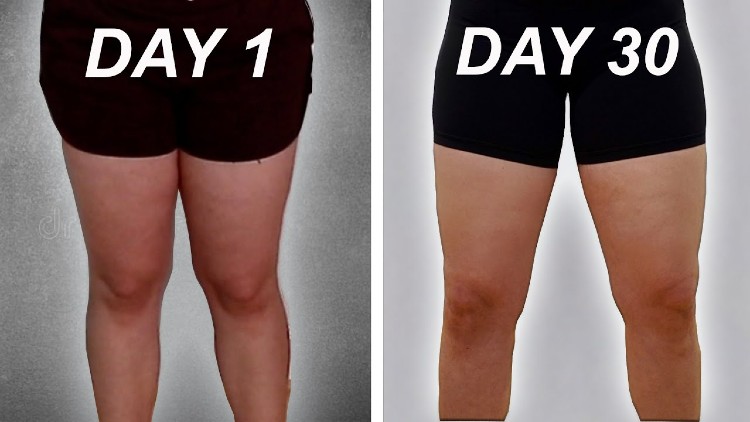
Consistency and hard work pay off! Source: Vanessa Blanco on Youtube12
When covid hit and gyms closed down Vanessa, like so many others was unable to go to the gym. She noticed she started to lose muscle quickly so she made the decision it was time to get creative with her workouts to begin building muscle again. She embarked on a lunging challenge that consisted of doing 100 lunges each day for 1 month.
Vanessa took her measurements at the beginning and her hips/butt area was at 41.5 inches, her left thigh was at 22.69 inches, and her right thigh was at 22.75 inches. Throughout her challenge, she did a variety of different types of lunges such as stationary, body weight, walking lunges around a track, weighted lunges, and lateral, reverse, and forward lunges.
After 30 days, her hips/butt area remained at 41.5 inches, her right thigh was at 23.06 inches, and her left thigh was at 22.5 inches. While she did not see any notable changes in her measurements during this time, she was able to get back into a consistent exercise routine and did mention multiple times the soreness she felt throughout the month of this challenge. She also recognized the need to add additional exercises to see significant muscle gain.
Lunge Variations
Knowing which muscles are worked by reverse lunges, having lunge variations can be beneficial to target different muscles, offer a great cardio boost, and help keep a workout routine fresh and new. Plus, sometimes it’s best to try out different variations to see which works best for you, or sometimes you may not have certain equipment so it’s good to have options.
Barbell Reverse Lunge vs Dumbbell Reverse Lunge
Using a barbell or a dumbbell will target the same muscles and should offer similar results but each comes with its own benefits. At the end of the day, choosing whichever is more comfortable is most important.
A barbell would be an excellent option for someone who is wanting to use a lot of weight while performing their reverse lunge. It’s easy to load a lot of weight onto a barbell vs holding big, heavy dumbbells.
Furthermore, using a barbell may be better suited for more experienced exercisers because the barbell requires a lot of balance and stability.
Dumbbells offer the huge benefit of assisting with balance and stability. By holding a dumbbell in each hand they can help the exerciser remain balanced throughout the lunge whereas this benefit is not seen when using a barbell.
Additionally, because of the grip required the forearms will also be activated while doing a dumbbell reverse lunge.
Barbell Reverse lunge:
Note, these can also be down with dumbbells in both hands rather than a barbell on the back.
Back Lunges
Back lunges can be done with or without weight. These can be a great option to be added to a physical therapy program as they can be low-impact and because they target the glutes and hamstrings which have been shown to have a huge impact on reducing knee pain after injury or surgery.13
Smith Machine Reverse Lunges
Using the smith machine to perform the reverse lunge allows someone to be able to easily add more weight like they would with a barbell. The interesting benefit the smith machine has is it will assist with balance and stability, which was one of the cons of using the barbell.
Curtsy Lunge
For a lunge that will target all of the muscles that a reverse or forward lunge does while also targeting the inner and outer thigh the curtsy lunge would be great to do. Instead of stepping right behind or in front like a traditional lunge, the back leg crosses behind the stable leg.
The curtsy lunge is also a lateral movement that will target the sides of the legs more.
If you’re looking for a trick to hit the outer thighs, you may want to try outer quad exercises.
Walking Lunge
The walking lunge adds more cardio to the traditional lunge because of the additional movement required. These can be done with body weight or while holding dumbbells.
Walking lunges will also require additional balance compared to a traditional lunge while walking forward so they do offer a more dynamic exercise.
Additional research has shown that the walking lunge highly activated the glutes and could significantly increase glute strength.14
Lateral Lunge
A great exercise to target the outer and inner thighs is the lateral lunge. These can be done with body weight or with weight. While it is possible to use 1 dumbbell in each hand it may be easiest for some to hold one dumbbell in both arms to help with balance and stability.
Body Weight
With Weight
Rear Foot Elevated Lunge
The rear foot elevated lunge is a more advanced exercise that will offer a deeper lunge to engage the hips more. This exercise does require extra flexibility as the back leg will be elevated onto a raised surface such as a bench or box.
Front Foot Elevated Lunge
Elevating the front foot slightly while doing a lunge is extremely beneficial in improving knee stability. To do this exercise, put the front foot onto a step-up or 25kg plate.
This exercise will require ankle mobility with the foot elevated. The emphasis of this exercise is on the front knee and not the back one.
It’s also important to note that the front leg is under consistent tension due to the elevation.
Jump Lunge
The jump lunge puts a high-intensity, cardio spin on the lunge. This exercise is a great option to add to HIIT workouts and will burn more calories because it will get the heart rate up quickly.
This exercise is performed with no weight, although a weighted vest could be added if desired.
It’s important to keep proper form throughout the entirety of this exercise and be sure to not jump too quickly compromising form.
Lunge Tips To Target Glutes vs Quads
Little adjustments can have a huge impact on the quality of the lunge and which muscles are being targeted.
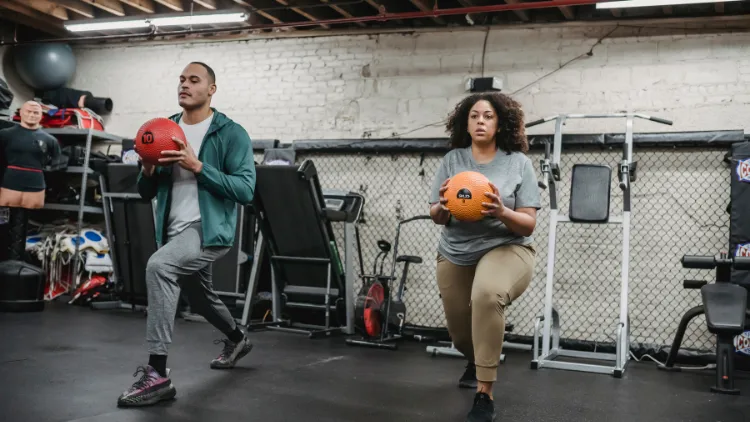
Source: Julia Larson via Canva.com15
Here are some of the top tips to keep in mind while performing lunges for glutes and quads.
Maximize Glute Engagement with Deficit Reverse Lunges & Elevated Reverse Lunges
One of the best-kept gym secrets to really target the glutes is the deficit and elevated reverse lunge. The deficit or front foot elevated reverse lunge is done with the front leg slightly elevated.
This will provide a greater range of motion for the hips which require the glutes to work harder.
The elevated reverse lunge can be done by putting the rear foot onto a bench. To really activate the glutes, push through the front heel while doing the lunge.
This slight adjustment to the reverse lunge will really target the lower glute muscles due to the increased range of motion of the hips and the extra stretch required of the glutes.
Step Length & Posture
Knowing how far to step when performing a lunge is crucial in which muscle will be targeted.
The longer the step is, while remaining stable and balanced, it will put a deeper emphasis on the glutes.
If the step is shorter, the quads will be engaged more. A slow descent into the squat with a large step will activate the glutes the most.
Staying upright, with a flat back and chest upright for the entire lunge will produce the best results. The legs should be taking the brunt of the weight, not the back, which could happen if someone begins to slouch or lean forward too much.
For an extra tip to engage the glutes more, lean forward slightly at the hips. This will activate the glutes because the glutes are stretched more.
Weight Distribution
Knowing how to distribute the weight when lunging is important to hold proper form throughout the exercise and make sure the right muscles are being targeted. Having the weight 50/50 on the front and back leg is a great way to go.
To get an even stronger glute burn, put slightly more weight on the front leg.
Weak Side Rule
An interesting idea to keep in mind while performing unilateral exercises is the weak side rule. Most people have a stronger leg or stronger arm.
With any single-leg or single-arm exercise this rule is followed by starting with the weak side first. The benefit to doing this is having more energy to complete the weaker side of the body to help work towards building strength.
How To Perform Reverse Lunges Muscles Worked With Proper Form
Correct form while doing a reverse lunge is crucial to properly target all the reverse lunges muscles worked and limit the risk of injury.
- Start standing upright. If not using weight, put the hands on the hips or in a comfortable position to help remain stable and balanced.
- Take a large step back with one foot.
- Lower the hips until the front quad is parallel with the floor. The front knee should be directly over the ankle. The back foot heel will be lifted. Be sure to remain in an upright position only slightly leaning forward if leaning at the hips. The back should remain flat.
- To return to the starting position, push the front heel into the floor and bring the back foot forwards. Continue until the desired number of reps is hit.
There are a few common mistakes people make while doing reverse lunges. One is not bending the back knee enough.
To help combat this, think about pushing the knee directly towards the ground while stepping back but don’t let the back knee hit the floor.
Another common mistake is pushing off of the back leg to get back into the starting position. Doing this will only use the quads and put the body in a vulnerable position for injury.
The front leg should be used and pushed off when returning to the starting position.
Workout Program That Incorporates Reverse Lunges
Here is a sample week-long program that includes both upper and lower body days and incorporates reverse lunges and 2 off days.
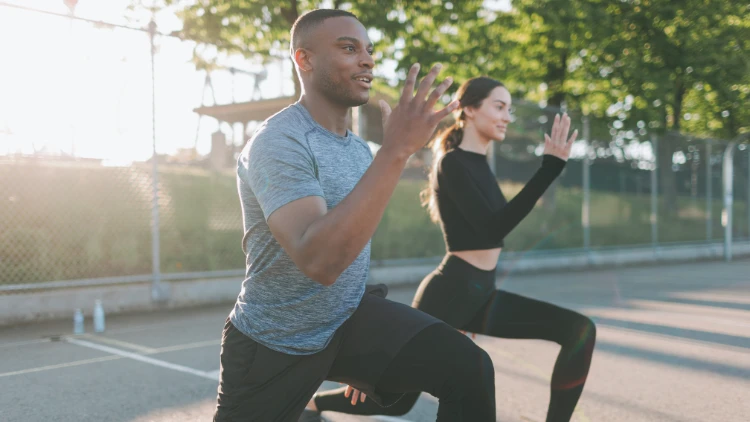
Source: corelens via Canva.com16
Modify the reps, number of exercises per day, and rest days as needed. Additionally, here is a 6-day workout routine plan for another option to try out.
Day 1 (Monday) Lower Body Focus:
- Back Squat: 3 sets of 10 reps
- Lateral Lunge: 3 sets of 10 reps
- Reverse Lunge: 3 sets of 10 reps on each leg
Day 2 (Tuesday) Upper Body Focus:
- Reverse Curls: 3 sets of 8 reps (Here is the list of reverse curl muscles worked)
- Push Ups and Sit Ups: 2 sets of 10 reps of each exercise
- Dumbbell Reverse Lunge: 2 sets of 10 reps on each leg
Day 3 (Wednesday) Lower Body Focus:
- Rear Foot Elevated Lunge: 3 sets of 10 reps on each side
- Curtsy Lunge: 3 sets of 10 reps on each side (see the how to above)
Day 4 (Thursday) Cardio:
- Jumping Jacks: 30 seconds of work, 30 seconds of rest 3 times (Here is information on the benefits of doing 100 jumping jacks a day)
- Jump Squats: 30 seconds of work, 30 seconds of rest 3 times
Day 5 (Friday) Lower Body Focus:
- Box Jumps or Box Jump Alternatives: 3 sets of 5
- Front Foot Elevated Lunge: 3 sets of 10 reps on each leg
Day 6 (Saturday) Rest Day
Day 7 (Sunday) Rest Day
Note, start with a weight that you can do 10-20 lunges on each leg. As you continue this program, it’s suggested to increase the weight by 2.5 pounds every week or every other week, or to simply increase the number by 1 each and for every exercise for week. Either or. Do this for 2-6 weeks and then take a 1-2 weeks off to deload. Afterward doing this program 1-3x, move on to full body beginner programs.
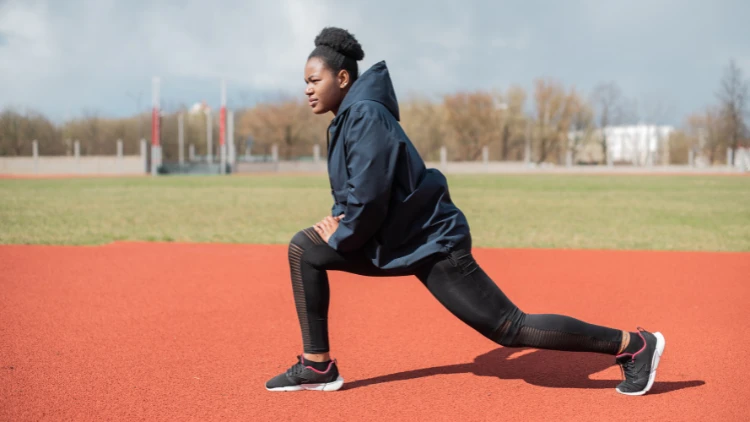
Source: Mikhail Nilov via Canva.com17
Reverse lunges are a great exercise to do to improve lower body strength, balance and stability. Knowing how many muscles are included on the reverse lunges muscles worked list it can be inspiring to want to add lunges into a workout plan.
Frequently Asked Questions
What Are the Reverse Lunges Muscles Worked if Done With a Long Step Stride?
The longer the step is, while remaining balanced and stable, the more the glutes will be activated. The closer the foot is the more the quads will be engaged.
How Many Reverse Lunges Should I Do a Day To Gain Muscle?
The most important thing when determining how many lunges to do is considering your fitness level and current and ideal weekly workout routine. 2-3 times a week with 3 sets of 10-15 reps on each leg could be a great starting point.
How Much Weight Should I Use While Lunging?
Using a light amount of weight could actually be beneficial because the technique is stellar and the mind-muscle connection between the glutes and other leg muscles can be strong. A heavier weight could distract from the mind-muscle connection and the focus instead is on lifting the heavy weight.
Finding a comfortable weight where 15-20 reps can be done is optimal.
How To Do Reverse Lunges for Quads Engagement?
To engage your quads more in a reverse lunge try taking smaller steps and stacking your ankle, knee and hips more.
How To Do Reverse Lunges for Glute Engagement?
For glute engagement in the reverse lunge it’s best to take a larger step backwards rather than a shorter step which works the quads more.
Are the Muscles Worked Different in Forward Lunges vs Reverse Lunges?
Both the forward and reverse lunges work the same muscles, but the forward lunge is more glute and quad intensive while reverse lunges have a greater emphasis on the quads.
References
1vladimirsukhachev. Canva. Accessed 20 April 2023. <https://www.canva.com/photos/MAESuKcBoo4-woman-doing-weighted-lunges/>
2decade3d. Canva. Accessed 20 April 2023. <https://www.canva.com/photos/MADerAJvWMU-gluteus-maximus-anatomy-muscles/>
3decade3d. Canva. Accessed 20 April 2023. <https://www.canva.com/photos/MADerMxdfBI-hamstrings-anatomy-muscles/>
4decade3d. Canva. Accessed 20 April 2023. <https://www.canva.com/photos/MADerFwn3js-abs-anatomy-muscles/>
5janulla. Canva. Accessed 20 April 2023. <https://www.canva.com/photos/MADE-Sq7uLk-quadriceps-female-anatomy/>
6decade3d. Canva. Accessed 20 April 2023. <https://www.canva.com/photos/MAC_U2yFahk-calves-anatomy-muscles/>
7Alila Medical Media. “Muscles Forearm Anterior Posterior View Stock Illustration 147943889.” Shutterstock. Accessed 20 April 2023. <https://www.shutterstock.com/image-illustration/muscles-forearm-anterior-posterior-view-147943889>
8baseimage. Canva. Accessed 20 April 2023. <https://www.canva.com/photos/MAFVPu-KY_0-man-doing-lunges-with-dumbbells/>
9Goulette, D., Griffith, P., Schiller, M., Rutherford, D., & Kernozek, T. W. (2021). Patellofemoral joint loading during the forward and backward lunge. Phys Ther Sport, 47, 178-184. <https://pubmed.ncbi.nlm.nih.gov/33310585/>
10Marchetti, P. H., Guiselini, M. A., Da Silva, J. J., Tucker, R., Behm, D. G., & Brown, L. E. (2018). Balance and Lower Limb Muscle Activation Between In-Line and Traditional Lunge Exercises. J Hum Kinet, 62, 15-22. <https://www.ncbi.nlm.nih.gov/pmc/articles/PMC6006536/>
11Liao, K.-F., Nassis, G. P., Bishop, C., Yang, W., Bian, C., & Li, Y.-M. (2022). Effects of unilateral vs. bilateral resistance training interventions on measures of strength, jump, linear and change of direction speed: a systematic review and meta-analysis. Biol Sport, 39(3), 485-497. <https://www.ncbi.nlm.nih.gov/pmc/articles/PMC9331349/>
12Vanessa Blanco. “I Did 100 Lunges EVERYDAY For 30 Days.” YouTube, 11 February 2021, Accessed 31 March 2023. <https://www.youtube.com/watch?v=w-hqNwIf48E>
13Kim, E.-K. (2016). The effect of gluteus medius strengthening on the knee joint function score and pain in meniscal surgery patients. J Phys Ther Sci, 28(10), 2751-2753. <https://www.ncbi.nlm.nih.gov/pmc/articles/PMC5088119/>
14Stastny, P., Lehnert, M., Zaatar, A. M. Z., Svoboda, Z., & Xaverova, Z. (2015). Does the Dumbbell-Carrying Position Change the Muscle Activity in Split Squats and Walking Lunges? J Strength Cond Res, 29(11), 3177-3187. <https://pubmed.ncbi.nlm.nih.gov/25968228/>
15Larson, Julia. Canva. Accessed 20 April 2023. <https://www.canva.com/photos/MAES1LfSoQI-young-multiracial-man-and-woman-doing-lunges-exercise-with-weight-balls-in-gym/>
16corelens. Canva. Accessed 20 April 2023. <https://www.canva.com/photos/MAEgNvpcUkk-diverse-athletic-couple-exercising-outdoors/>
17Nilov, Mikhail. Canva. Accessed 20 April 2023. <https://www.canva.com/photos/MAEiPWdRp_Y-woman-in-black-hoodie-doing-lunges-on-track-and-field/>